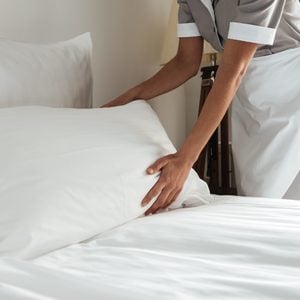The No. 1 Tipping Mistake You Don’t Realize You’re Making
Updated: Feb. 13, 2024
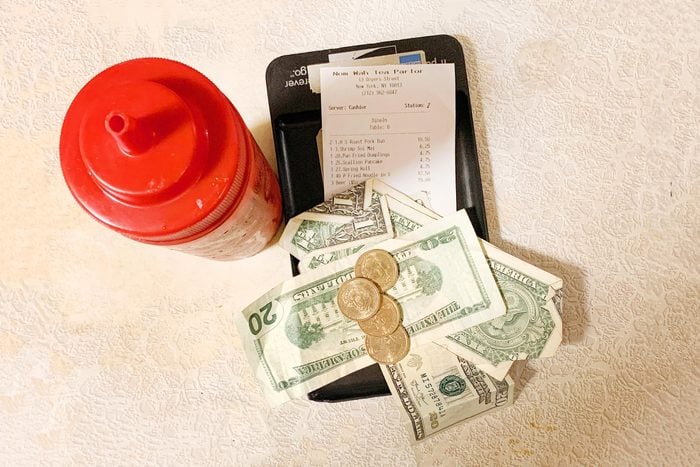
Even the most polite diners may miss this important rule of tipping etiquette
I spent a decade working as a server, everywhere from fancy steakhouses to cheap buffets to an elite “club” frequented by dignitaries to a Wild West restaurant where I had to dress up in 1800s clothing (it was very itchy!). I started waitressing at 14 years old and did it all the way through graduate school. Honestly, it was a great job! Flexible hours, free food, fun co-workers, it was active, and I love meeting and helping people. But the one thing I didn’t love? Having my entire life dependent on tips and the whims of the customers leaving those tips. Some customers were simply hard to please and nothing I could do would make them leave a normal tip, but there was one major mistake even some of my best customers made, usually out of ignorance—and you may be making it too!
Get Reader’s Digest’s Read Up newsletter for more etiquette, pets, humor, cleaning, travel, tech and fun facts all week long.
About the expert
|
Why tips matter so much
Before I tell you what the mistake is, first I want you to know why gratuities are so important. They’re not “extra” money; they make up part of the server’s base wage. Servers usually make “minimum food wage,” not minimum wage. So even though the minimum wage in your state may be $12, the minimum food wage will be far below that. It varies by state, but the federal Fair Labor Standards Act set the minimum food wage to be $2.13 per hour. Yes, you read that right. It’s legal because servers are expected to make enough tips to get the rest of the way to minimum wage (or more). Standards vary by state, but as of this writing, 29 states currently have a minimum food wage of $4 per hour or less—with 20 of those states being right at $2.13.
So please know this: Tips aren’t just nice, they’re necessary.
The No. 1 tipping mistake
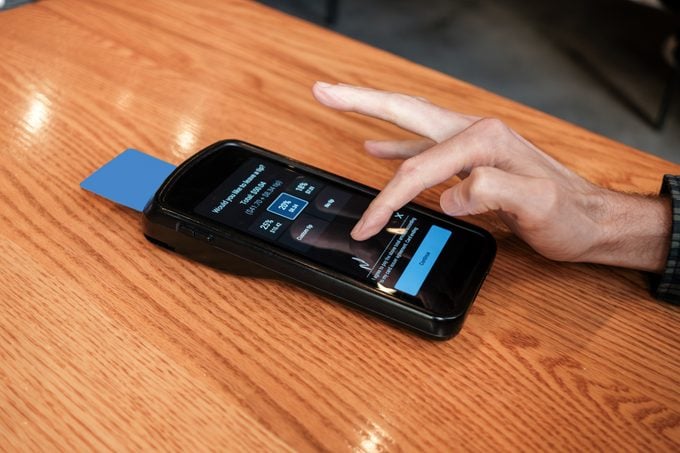
Okay, so now that you know how important tips are to servers—what is the No. 1 tipping mistake people make? Tipping strictly on the total amount on the bill. This, along with the other habits restaurant staffers dislike, can set you up to make major etiquette mistakes.
Wait, what? You see “Total: $50” so you should tip $10 for a 20% tip, correct? “That is usually the case, but not always. There are certain circumstances where the amount you tip should be based on a higher total amount,” explains Jan Goss, tipping expert and the founder and CEO of Show Up Well consulting, providing training in all areas of etiquette. “This isn’t to gouge anyone, this is to ensure that the server is getting paid the amount of tip that they earned.”
We asked Goss to walk us through each of these special tipping circumstances.
Situation 1: You used a coupon
Groupons, school fundraisers, online specials, group discounts, coupons, corporate benefits and other deals can be used to get a meal for a great price. But you shouldn’t use your good fortune to stiff the server, Goss says.
How to tip: Calculate what the total would be without the discount and tip based on that amount. Most bills will show the total and then list the discounts, with the discounted total at the bottom of the bill.
Example: The total bill was $50. You had a buy-one-get-one-free entree coupon, so the bill after the discount was $25. You should tip at least $10 (20% of the bill before the discount).
Situation 2: You don’t tip on taxes or fees
A frugal-living tip making the rounds on social media advises customers to tip only on the pre-tax, pre-fee amount listed on the bill—the idea is that the government is getting their share through your tax money and you shouldn’t have to tip on that. It’s also a way to sort of get around some of the extra fees some restaurants are adding to their bills, like a “kitchen service charge,” a “Covid charge” or a “management fee.” For smaller checks, this is a negligible amount, but if you splurged on a fine-dining restaurant it can make a significant difference in the amount of your tip. Your feelings about taxes and fees aside, the expectation is still that you tip based on the total bill, Goss says.
How to tip: Use the final total on the bill, including taxes and fees, to calculate the tip.
Example: The total bill is $90 before and $100 after taxes and fees. Instead of tipping $18, you should tip a minimum of $20 (20% of the total bill, including tax).
Situation 3: You used a gift card
Someone gives you a gift card to a restaurant because they want to treat you to a meal, so it makes sense that you may think of that gifted meal as free. However, you still need to tip on the total amount of the meal, even if your gift card covered most or all of the cost of the meal, Goss says.
How to tip: If you have enough on the gift card to cover the total bill plus a 20% tip, then pay just with the gift card. Otherwise, plan to tip using your own money, either with cash or a credit card.
Example: The total bill was $50. Your gift card is $50. You should tip at least $10 (20% of the total bill).
Situation 4: You were given free food or drinks
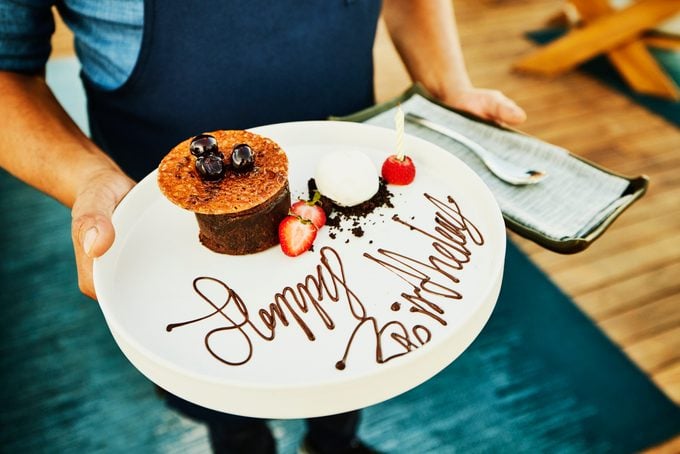
There are many reasons you may get free food or drinks at a restaurant: You had your drink comped after you got the wrong one, you got your meal covered because you had to wait two hours, you had to send food back (without being rude) or perhaps it was your birthday and the restaurant gave you a free dessert. Regardless of how you got the free food, you should tip on a total that includes the free items, Goss says. “This isn’t strictly necessary or even expected, but it is considerate,” she says. “A lot of having good dining etiquette boils down to not just knowing what is ‘right’ but what is kind and compassionate to others.”
How to tip: Add the amount of the free item to your bill, then tip on that total. If you aren’t sure of the amount, it’s fine to guess, Goss says, or to simply add a few dollars to your final tip amount.
Example: The total bill was $50. You were given a free drink. Your partner’s drink was $5. You should tip a minimum of $11 (20% of the total bill plus an extra $5 for the drink). Note: This isn’t a replacement drink. If you purchased a drink and something was wrong with it so they fixed it with a new one, then you don’t need to adjust for that, as the drink you purchased is still on the bill.
The one exception: If someone sends you a drink to your table and you accept it, you don’t need to tip on that drink. The person who ordered it will have it on their bill, and they should tip based on their total amount.
How much should you tip?
Wondering how much to tip? If you’re still operating on the idea that 10% is a base tip, 15% is for good service and 20% is for excellent service, then you are using outdated and incorrect information, Goss says. “The general rule now is you should tip a minimum of 20%—more if you feel the service was excellent,” she explains. “Be as generous as you can while still staying within your means.” In other words, don’t break the bank to shell out for a hefty tip, but do factor the higher expected tip ranges into your budget as you’re deciding when and where to eat out.
Goss’s advice is for dine-in restaurants where you have a server who takes your order, brings your food and provides service during the meal. She adds that other situations (think coffee shops, self-serve restaurants and carryout) may not require a tip, or you can pay a lesser amount. Generally, workers at these establishments are paid regular minimum wage (or more).
Has tipping culture gotten out of hand?
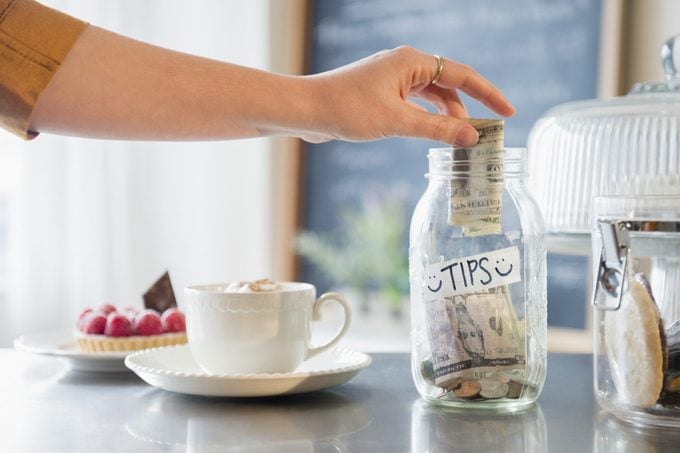
In a word: yes. If you’re feeling overwhelmed by the amount of money that a tip adds to your bill, you are not alone. Even Goss says she’s feeling the strain. “Not only has the amount of money we’re expected to tip increased but so has the number of occasions and establishments that ask for tips—to the point where most of us can agree it’s getting excessive. A lot of times it is just about greed,” she says. But, she adds, the important thing to remember is that none of these things are your server’s fault, nor should they be punished by giving them reduced tips.
If you’re not happy with the current tipping standards, protest with your wallet. This doesn’t mean stiffing your server. It means you can choose not to patronize restaurants that use sneaky fees or pay their servers the bare minimum.
“At the end of the day, the customer is always in control of the tip and it should be given as a token of gratitude, not guilt—that’s why it’s called a gratuity,” she says.
Sources:
- Jan Goss, founder and CEO of Show Up Well consulting and author of two books, Protocol Power and Bedroom Etiquette; phone interview, Feb. 9, 2024
- U.S. Department of Labor: “Minimum Wages for Tipped Employees”


